THE HISTORY BLOG
Michelangelo’s first sculptures restored
May 6th, 2022

Michelangelo was just 15 years old when he moved to Florence in 1490 and joined the informal art academy sponsored by Lorenzo de Medici in his sculpture garden at Piazza San Marco in Florence. For two years, Michelangelo lived in the Medici Palace and studied in Lorenzo’s garden of antiquities under the guidance of Bertoldo di Giovanni, the sculptor and portrait medallist who was curator of Lorenzo’s antiquities and instructor of the young talents who studied there.
Michelangelo’s first sculpture (1490-1491) was the Madonna of the Steps, a low relief homage to Donatello’s relievo staccato (smashed relief) technique. The Madonna sits on a square stone block, the Christ child on her lap, his back to the viewer. On the left is the flight of stairs that gives the piece its name. At the top of the stairs, a pair of putti wrestle while a third one looks away, leaning pensively over the banister.

Michelangelo kept both reliefs for his entire life. He considered the Battle of the Centaurs one of his greatest works, evidence that he should have stuck to sculpture from the beginning instead of getting sidetracked by annoying distractions like, oh, say, the ceiling of the Sistine Chapel. After he died in 1564, the Madonna was sold to Cosimo I de Medici by Michelangelo’s nephew and heir (under some duress). Grand Duke Cosimo II returned it to the Buonarroti family in 1616. The Battle of the Centaurs has been in the Buonarroti family for five unbroken centuries. Both reliefs are part of the permanent collection of the Buonarroti House.
In 2020, the museum embarked on a new conservation project for the two works. Non-invasive imaging techniques were used to assess the condition and plan the subsequent interventions.
After twenty-five and thirty years respectively after the restorations carried out on the works, the new cleaning intervention was functional to remove the subtle stratifications of atmospheric deposits of a coherent and incoherent nature that opacified and chromatically altered the reliefs. In fact, the color of the marble, changed due to the alteration and penetration of the materials used during the nineteenth-century calculations (waxes, oils, soaps) and of the restoration materials (waxes and solvents such as the slightly amber-colored turpentine used in the case of the Battle of the Centaurs for example) has reached a balance which, after the current cleaning operation, allows the high relief to be read in its technical sculptural data in a clear and harmonious way.
The cleaning to which the works were subjected gave such results as to make the pre-existing setting no longer suitable for their best enhancement, which saw the reliefs on a light background that mortified the color and the modeling of the two marbles. In the new layout, anthracite-colored painted metal structures have been designed that make the two reliefs stand out. The story of both works is entrusted to a short, very comprehensive text on the history of collecting and art, written in anthracite-colored characters on a light gray background in both Italian and English. Furthermore, the new LED lighting allows the sculptures to be read in every detail.
Michelangelo’s two earliest masterpieces are now in the refurbished Room of Marbles of the Casa Buonarroti.
Video of the Madonna of the Steps undergoing conservation:
Video of the Battle of the Centaurs undergoing conservation:
Found: sarcophagus of Protector of the Divine Flank
May 5th, 2022
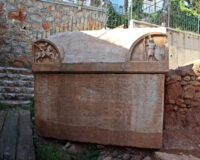
The sarcophagus was unearthed in a salvage excavation before the construction of a new building for the General Directorate of Izmit Water and Sewerage Administration. Between 2017 and 2019, the excavation revealed a Roman-era walled necropolis including 51 tombs made of repurposed tegulae (roof tiles), two amphora burials, and five large sarcophagi, the Protectors among them. Archaeologists also discovered 99 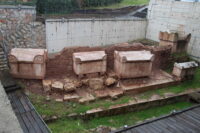
The Protector sarcophagus telegraphs its owner’s profession even before you read the text. On the upper right, there’s a man on horseback attacking an enemy with a spear. On the upper left stands a soldier with a plumed helmet, spear, and shield. The Latin inscription on the front translates to the following:
“To the spirits of the dead. I, Tziampo, Protector of the Divine Flank, restored my monument, originating from regio Pieucensis, province of Dacia Minor. I lived 50 years. And I want that nobody will be permitted to be deposed here except my son Severus or my wife. I served as horseman for nine years, as ordinarius for 11 years, and protected as protector for 10 years. But if another (person) dares to open (the sarcophagus), let him give the fiscus 20 folles and the city 10 folles. On the whole, I served for 30 years. Farewell, passers-by.”
A follis was a bronze or copper coin introduced by Diocletian around the time of his Currency Decrees, ca. 301 A.D. The focus was the emperor’s personal treasury. It looks like nobody ever had to pay Tziampo’s fine, however, because there are only two bodies inside, believed to be the Protector and his wife. Not even Severus made the final cut.
The title of Protector Divini Lateris began as an honorific granted by Emperor Gallienus (r. 253-268 A.D.) to officers who had distinguished themselves in loyal service to him. It was an attempt to curry favor with the troops and to privilege personal loyalty to the emperor during the turbulent Crisis of the Third Century. By the time the sarcophagus was inscribed during the reign of Diocletian or his successor Constantine I, the Protectores were a powerful cavalry association attached to the imperial court, comparable to and in competition with the Praetorian Guard. Protectores reached the very pinnacle of power. Diocletian was commander of the Protectores when he ascended the imperial throne, as was Constantine I.
This inscription contains even more remarkable information: Tziampo’s place of origin has never before been recorded. The province of Roman Dacia was originally divided into Dacia Superior and Dacia Inferior. Superior was later divided into two provinces and Inferior was renamed. Then all the three would be united into one known as Tres Dacia. Aurelian lost most of Dacia in the early 270s. After the withdrawal of Roman troops and administration west of the Danube, a new province called Dacia Aureliana was established in the Balkans. Diocletian split Dacia Aureliana into two — Dacia Mediterranea and Dacia Ripensis.
All of this talk of proliferating Dacias is to say that this inscription is the sole known reference to a Roman province named Dacia Minor, nor are there any known references to a Pieucensis region. Perhaps it was a vestigial reference to Dacia Inferior, which would make Tziampo Romanian.
Underlining that the sarcophagus is an important heritage, Kocaeli Museum Director Serkan Geduk said,
“The sarcophagus is of great importance not only with the information contained in the inscription but also with two skeletons and small finds found in situ. Because the inscriptions on the protections of the Roman emperors known until now have survived without any other material remains. For the first time, an inscription of an imperial bodyguard; It has survived as a whole with two skeletons in the sarcophagus and grave gifts. In this sense, the Tziampo sarcophagus is the first in the world in this field. It is a great chance for us that this sarcophagus and the necropolis area around it have survived to the present day,” he said.
The necropolis, its five great sarcophagi still in situ, is being converted into an open-air archaeological site. It will be covered to protect it from the elements.
1st ancient solid marble bathtub found in Turkey confiscated from smugglers
May 4th, 2022
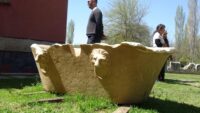
The basin is 5’11” long and weighs one ton, so by no means portable antiquity. It is decorated with two bas relief lion’s heads holding rings in their jaws, a popular motif on bath and fountain basins as well as tub-shaped sarcophagi. (Or as waterspouts on temple eaves. Or as pulls on furniture.)
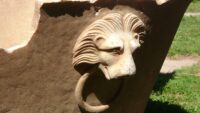
A basin of this size with high-end carving was likely used in the private home of a wealthy individual. Public baths also used tubs, either because the bathing facility was too small to have a hypocaust heating system which was very expensive to install and operate or to hold cold water for people to dip into quickly when closing their pores in the frigidarium.
Provincial Culture and Tourism Director Umut Tuncer examined the bathtub and emphasized that the ancient city of Aphrodisias is a very special area, which is on the UNESCO World Heritage List. […]
Tuncer said that the tub would be restored and displayed at the museum. “We believe that it will attract the attention of art lovers. There is a bath structure in all of our ancient cities. These places were actually used as public and social spaces.
The culture of hot water, bathing and cleaning was an important part of the period. We have seen everything we expected to see in this tub. […] The richest ancient city of the region is Aphrodisias. The city also had a large sculptor school. We can see the curves that reflect the facial expressions, muscles and mimics in the sculptures in the Aphrodisias Museum,” he said.
The ruins of Aphrodisias have long been a target for looters. Gendarmerie teams are constantly patrolling for illegal excavations, using drones with motion-sensitive thermal cameras to scan the ancient city for suspicious treasure-hunting activity.
The funerary altar of a 13-year-old girl found in Rome
May 3rd, 2022

Found 6.5 feet below road level, the altar is carved out of white marble. It is topped with a bas relief of two songbirds on each side of a bunch of grapes or fruit baskets. Stylized half acanthus leaves bracket 
VALERIA
P F
LAETA
VIXIT ANNIS
XIII M VII
The inscription records that the deceased, Valeria Laeta, lived only 13 years and 7 months. It’s not clear what the P stands for, but the convention suggests it was her father’s initial because the F stands for “filia” meaning daughter.


All of these elements were part of a larger complex of funerary structures built along the ancient Via Latina, one of the oldest Roman roads that led south from the Eternal City 125 miles to what is now Benevento, 30 miles north of Naples.
Unique Neolithic, Bronze Age burials, structures found in France
May 2nd, 2022
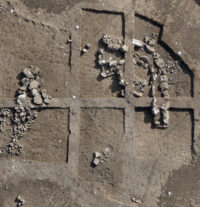
The excavations revealed a complex network of ditches and trenches of palisades which came to encircle a vast habitat whose above-ground parts have now disappeared. The largest of these ditches are more than 2 meters deep, while the narrower and shallower excavations probably correspond to trenches linked to the installation of posts which were to participate in the construction of a palisade or a rampart. This desire to entrench the dwellings behind such constructions is frequent at the end of the Neolithic and could reflect a particular architectural tradition, a new way of perceiving the integration of villages into the landscape or be the witness of political instability and a desire to protect themselves.
A few unusual structures, such as a small C-shaped ditch or an L-shaped interruption, remain quite enigmatic and may correspond to special developments located near the main entrance to the village.
The first dates obtained on these developments place their construction between 2500 and 2200 BC, which corresponds to the last phase of the Languedoc Final Neolithic (Chalcolithic).
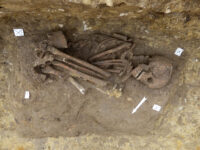
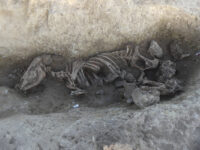
Also unique are the surviving bases of stone walls documenting for the first time the shape and dimensions of early protohistoric houses in central Languedoc. One section of wall consisting of two rows of blocks is recognizable as the apse of a large building more than 30 feet long and 20 feet wide. The blocks are graduated, with the largest ones on the exterior wall and thinner ones on the interior of the building. It’s likely the structure’s walls were stone on the bottom but formed of wood and earth in the upper parts.
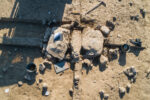
Extinct crocodilian may have been ritually beheaded
May 1st, 2022

Researchers from Japanese and Chinese universities studied two examples, one skilled in the 14th century B.C., and one in the 10th century B.C. They are slender-snouted crocodilians, but of the gharial family, the third surviving family of modern crocodilians alongside sharp-nosed crocodiles and blunt-nosed alligators. The specimens have skull features from the two other crocodilian branches as well as the gharial features, which makes it something of a missing link. The new species was named Hanyusuchus Sinensis after Han Yu, a Confucian essayist, poet, and government official who tried (unsuccessfully) to fend off an infestation of crocodilians in southern China’s Guangdong province in the 9th century.
The two Bronze Age examples are adults of unknown sex. Extrapolating from the surviving fossilized bones, they were between 18 feet and 20 feet long. One of them had 17 chop marks, 16 on the skull, and one on the neck. The orientation, spacing, and depth of the chop marks indicate multiple blows by the same right-handed individual. Chop marks in different orientations may have been made by other people or by the same individual from a different position. One vertebra was completely bisected in a single blow believed to be a deliberate decapitation.
These blows were delivered with heavy metal weapons. Bronze axes in this period are known to have been symbols of monarchical power and used in religious rituals.
Any species considered a so-called missing link is always a significant find, but Hanyusuchus Sinensis is important for other reasons too: chiefly, it seems to have been driven to extinction by humankind. Both of the subfossil gharial specimens showed extensive evidence of vicious attacks and even beheading. The authors connected the fatal wounds with weapons of the period in question.
“Given the two specimens we have were killed by people, the species is no longer around, and given the historical evidence of systematic crocodilian purges in the region, the conclusion must be that humans are responsible for Hanyusuchus Sinensis's demise,” said Yoneda. “Crocodilians are top predators and play a pivotal role in the maintenance of their freshwater ecosystems. This historical crocodilian conflict serves as a warning to people in the present.”
The Celtic city gate is virtually reconstructed
April 30th, 2022
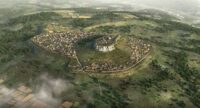
Stauffenberg's high, rocky plateau made it an ideal location for defense. The first traces of human occupation go all the way back to the 5th millennium B.C., but it reached its peak of population and importance in the late Iron Age when the Celtic oppidum of Menosgada was built on top of the plateau. It was occupied from 150 B.C. until 40 B.C. when it was burned and abandoned. The monumental gate was built around 130 B.C.
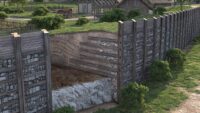
Fragments of more than 30 human skulls were recovered. Archaeologists believe the skulls were placed in niches and on wooden posts in the gate. Ancient sources describe Celts adorning their gates with skulls.
“Everything indicates that the nobility who lived on the summit plateau of the Staffelberg wanted to show what they could afford with this gate. It is a demonstration of its richness and the high level of technology,” explains Dr. Markus Schußmann, who led the research excavation at the west gate of the oppidum…. According to current knowledge, the residents probably set the oppidum on fire themselves when they abandoned it around 40 B.C. Using the traces left by the foundations, the charred wood of the gate and the iron nails and fittings in the ground, the archaeologists meticulously did detective work to reconstruct the presumed structure of the complex.
Bavarian State Office for the Preservation of Monuments, emphasizes: “The Celtic Gate opens our eyes to the pre-Christian past. It reveals a lot about the life of the Celts: for example, that traffic on the oldest known street in Bavaria was on the right at the time.”
Viking hoard dodges auction bullet
April 29th, 2022
Here’s an intriguing case of unintended consequences in cultural heritage law. Meet the Everlöv Hoard:
The Everlöv Hoard is a large group of more than 950 silver objects –912 coins, and 40 pieces of jewelry — from the Viking Age discovered in southern Sweden’s Skåne province in the 1980s. The oldest coin dates to the 9th century, the youngest to 1018, indicating the hoard was assembled in the late Viking era. The composition of the objects marks them as a single deposition, but the original find site is unknown.
Many of the coins are from Bavaria, which is unusual in Swedish hoards. The hoard also contains an unusually high number of Anglo-Scandinavian coins, ie, coins struck by Scandinavian kings in imitation of the ones struck by the king of England. Among the objects are several extremely rare pieces: a buckle with intricately enlaced zoomorphic figures decorated with filigree and granulation, a Slavic lunula, and an oversized jewelry bracteate minted by Henry II, Holy Roman Emperor, aka Saint Henry the Exuberant.
The discovery was not made in the usual way; nobody found it by metal detecting or in a happy plowing accident. It was not dug up at all, in fact. The current owner found it in a chiffonier that had been passed down through generations of the family. (Side note: finding a Viking silver hoard in an old piece of furniture has to be in my top 3 greatest lifetime fantasies.)
The hoard was cataloged and briefly exhibited in 1986 at Lund University’s Historical Museum. The museum didn’t get to keep it, however. They didn’t even get to study it. The hoard remained in private hands and was never exhibited again nor made available to researchers.
According to the Swedish Historic Environment Law, any archaeological finds are property of the state and must be reported to county officials. The state can then choose whether to redeem them for a fee. A version of this law has been on the books for centuries, so whoever found this hoard and stashed it in the chiffonier was breaking the law, but that person has been dead a long time. If an ancient artifact qualifies as an inheritance — like, say, if it was found inside heirloom furniture — then ownership goes to the individual who found it.
The state tried to redeem the hoard anyway when it emerged in the 1980s, but the atypical circumstances made it a thorny legal issue and a court ruled that the hoard was owned by the person who found it in the chiffonier. As the law is currently written, there is no mechanism for the state to claim an archaeological object on the grounds of its cultural importance regardless of how or when it was discovered, so that was that. The hoard all but disappeared.
Earlier this month, news broke that the Everlöv Hoard would be sold at auction on April 29th. Even worse, it was being offered in individual lots, so the whole hoard could have been scattered to the four winds. An uproar ensued as archaeologists and researchers protested the sale. The hoard as a whole is far more significant than the sum of its parts, especially the Bavarian through-line which might indicate a previously unknown trade route linking Sweden and southern Germany. Besides, the case could create a dangerous precedent wherein bad actors could claim a fresh find was a surprise legacy.
Literally the day before the scheduled auction, the Everlöv Hoard was saved from dispersal by the Gunnar Ekström Foundation for Numismatic Research and the Sven Svensson Foundation for Numismatic Research who pooled their resources and bought the whole kit and kaboodle behind the scenes. The auction is off and the hoard will now enter the collection of the Royal Coin Cabinet at Stockholm’s Economy Museum where it can and will be studied to the nerdiest heart’s content.
Terrible Tilly lighthouse for sale
April 28th, 2022

Terrible Tilly, so dubbed for its terrible storms and dangerous navigation conditions, was commissioned by Congress in 1878. Construction on the remote basalt stack in the middle of stormy seas was challenging, and the lighthouse took a year and a half to build. One man, a surveyor, was swept out to sea and drowned in the planning stage, cementing Tilly’s Terrible reputation before the first brick was laid.
The first-order Fresnel lens was first lit on January 21st, 1881. By the time it was decommissioned in 1957, it had become the most expensive lighthouse in the United States to operate. Tilly then passed into private ownership, changing hands several times. It was acquired by the Eternity at Sea Columbarium in 1980, but it lost its license in 1999 for violations including proper storage.
Legal difficulties notwithstanding, the columbarium is still the crux of the sales pitch.
The plan is for the lighthouse to appeal as an alternative to scattering cremated remains at sea, by encasing them in titanium urns in a bank of niches.
David Adams, a funeral business consultant with the Johnson Consulting Group in Scottsdale, Arizona, who is brokering the sale, is aiming for an official pitch by Memorial Day.
“It’s going to have to take somebody with an entrepreneurial spirit,” he said.
The cremation rate in the United States was low when Morissette, a 77-year-old Oregon resident with a background in real estate development, purchased the lighthouse over four decades ago. The rate reached 56% in 2020 and is rising, the Cremation Association of North America said.
“I find it intriguing some people still like the romance of scattering ashes at sea: ‘Dad’s out in the ocean and Mom’s still floating with sharks,'” Adams said.
“Although romantic in many regards, it is somewhat final. There is no real place to focus on, to go back and memorialize,” he said.
The lighthouse, he added, “gives them a specific focal point.”
Well yes, but a specific focal point that can only be accessed half the year and then only by chartering a helicopter. On the other hand, what a view:
Phoenician necropolis found in southern Spain
April 27th, 2022
A Phoenician necropolis from the 4th or 5th century B.C. has been unearthed in Osuna, southern Spain. The necropolis, discovered during water utility upgrades, contains limestone vaults that are in an excellent state of preservation. It is a unique find because the only comparable necropolises that have been unearthed so far are coastal, dotting the area around the ancient Phoenician colony of Cádiz. Osuna is inland, about 55 miles east of Seville.
An archaeological investigation of the site has revealed eight burial vaults with stairways and entrance atria. These were elite graves, and unprecedented in what would have been practically the hinterlands of Phoenician Spain.
The lead archaeologist, Mario Delgado, described the discovery as very significant and very unexpected. “To find a necropolis from the Phoenician and Carthaginian era with these characteristics – with eight well tombs, atriums and staircase access – you’d have to look to Sardinia or even Carthage itself,” he said.
“We thought we might find remains from the imperial Roman age, which would be more in keeping with the surroundings, so we were surprised when we found these structures carved from the rock – hypogea [subterranean vaults] – perfectly preserved beneath the Roman levels.”
Phoenicians settled southern Spain from around 800 B.C., not long after the founding of Phoenicia’s greatest colony, Carthage. They set to work exploiting the region’s rich and untapped deposits of tin, gold, and silver and expanding their trade networks. The trade of metals and consumer goods (fish, textiles) made the Phoenician settlements of what is now Andalusia enormously prosperous. Archaeologists believe that the rich tombs found on the coast were built for the shipping dynasties that ran Phoenician commerce.
The mayor said that while more research needed to be done, the luxurious nature of the necropolis suggested it had been built for those at “the highest level” of the social hierarchy.
“The operation isn’t over yet and there’s still more to be discovered,” she said. “But the team has already come up with reliable information that attests to the historical importance of all this. Both the graves themselves and the ritual spaces that are being examined suggest that this wasn’t any old burial site.”




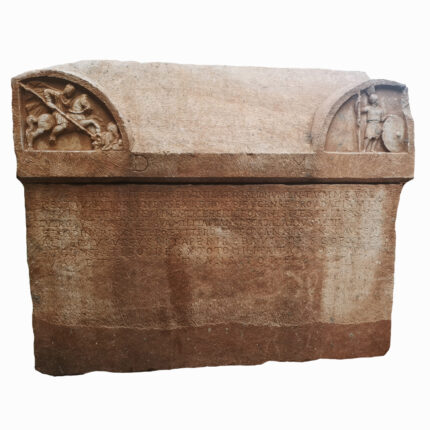
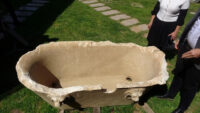
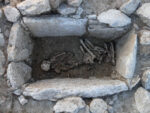
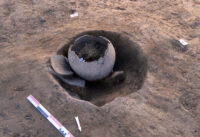
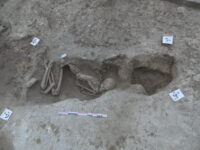
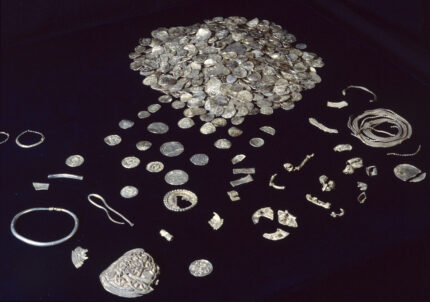

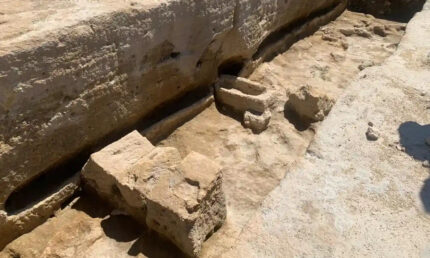
Comments
Post a Comment